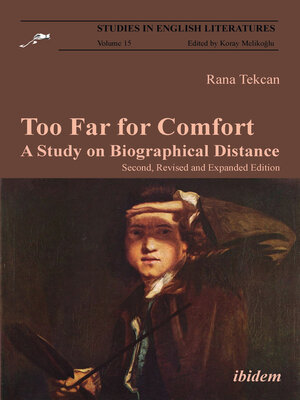Too Far for Comfort
ebook ∣ A Study on Biographical Distance. Second, Revised and Expanded Edition · Studies in English Literatures
By Rana Tekcan

Sign up to save your library
With an OverDrive account, you can save your favorite libraries for at-a-glance information about availability. Find out more about OverDrive accounts.
Find this title in Libby, the library reading app by OverDrive.



Search for a digital library with this title
Title found at these libraries:
| Library Name | Distance |
|---|---|
| Loading... |
The dynamic between the biographer and the subject is, perhaps, one of the most fascinating aspects of biography as a genre. How does the biographer stage the illusion that is the narrative life, the illusion that the subject assumes a living form through words? In contrast to purely fictional forms, biography writing does not allow total freedom to the biographer in this creative act. Ideally, a biography's backbone is structured by accurate historical facts. But its spirit lies elsewhere. The way a biographer captures the spirit of a subject is intriguingly shaped by the historical distance between the two. We find three types of distance in biographical narrative: First, where the biographer and the subject personally know one another; second, where the biographer is a near contemporary of the subject; and third, where biographer and subject are distinctly separated; in some cases, by hundreds of years. In this revised and expanded edition, Rana Tekcan explores how some of the most accomplished biographers manage to recreate "life" across time and space. She looks at their illusionary art through the narrative strategies in Samuel Johnson's Life of Savage, James Boswell's Life of Johnson, Lytton Strachey's Eminent Victorians, Michael Holroyd's Lytton Strachey, Park Honan's Jane Austen, and Andrew Motion's Keats.







